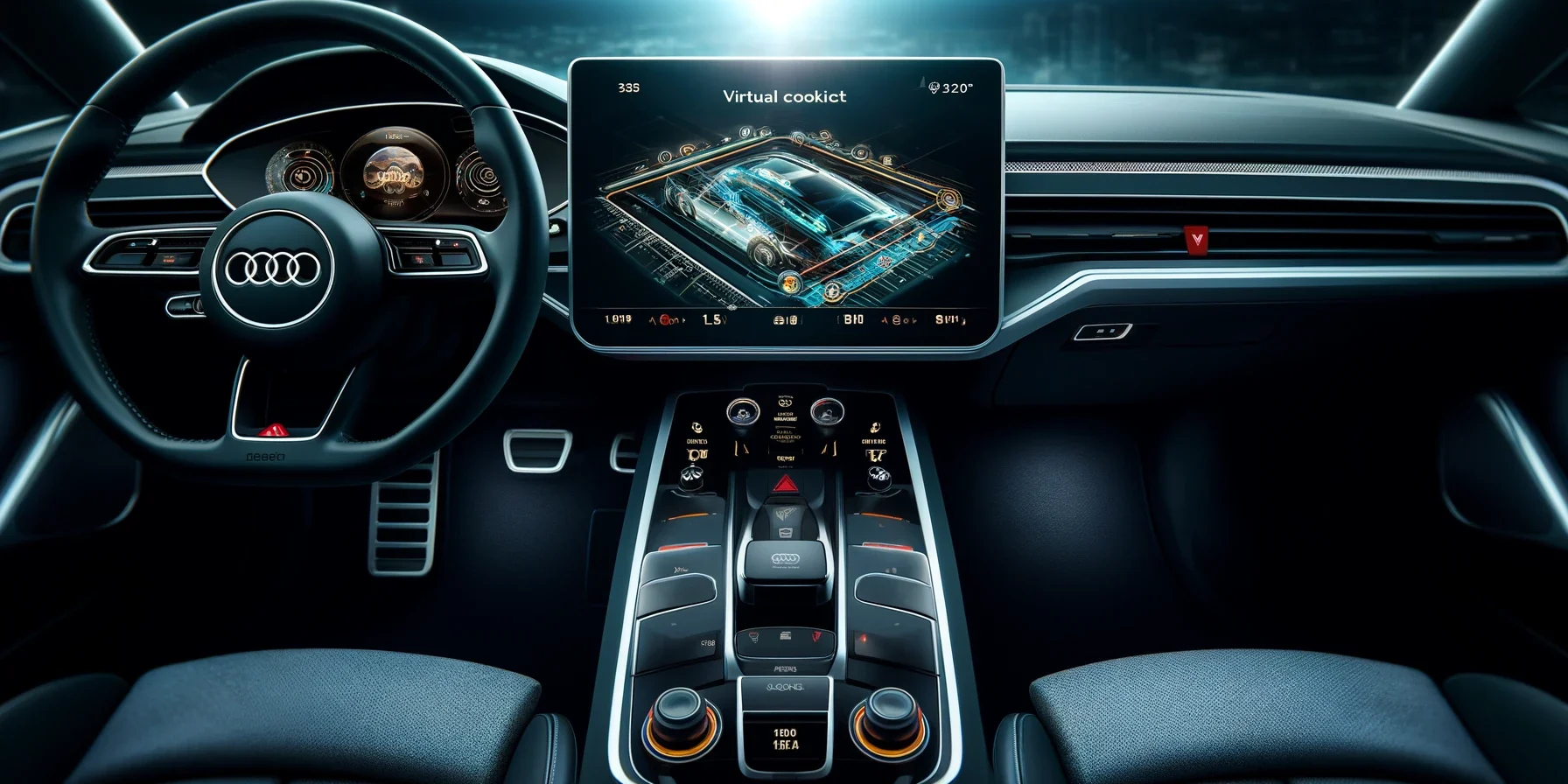Technologies Used in Audi Cars
Audi is synonymous with modern automotive technologies. The brand continually invests in the development of innovative solutions that improve the comfort, safety, and performance of its vehicles. One of the most important technologies that distinguish Audi from its competitors is the quattro all-wheel-drive system. Introduced in the 1980s, the permanent all-wheel-drive system has become a key element of the brand’s identity. It provides better traction and stability, translating into safer driving, especially in difficult weather conditions.
Another innovation is the Audi Virtual Cockpit technology. This fully digital instrument panel replaces traditional gauges. The Virtual Cockpit offers a wide range of customization options, allowing the driver to tailor the displayed information to their needs. The high-resolution screen displays maps, vehicle data, and multimedia in a clear and intuitive manner.
Audi is also a pioneer in driver assistance systems. Systems like Audi Pre Sense, which monitor the vehicle’s surroundings and can automatically engage the brakes if a threat is detected, exemplify the brand’s commitment to safety. Other advanced technologies include adaptive cruise control, lane-keeping assist, and traffic sign recognition, making driving more comfortable and safe.
In recent years, Audi has been intensively developing electromobility technologies. Models like the e-tron, fully electric SUVs, are equipped with advanced energy management systems that maximize range and efficiency. Audi also invests in developing charging infrastructure to facilitate the use of electric vehicles.
The interiors of Audi cars are characterized by luxury and advanced multimedia solutions. Infotainment systems offer access to a wide range of functions, including navigation, internet connectivity, and online services. Audi connect allows for the integration of the vehicle with smart home devices, enabling remote management of various car functions.
Audi’s MMI (Multi Media Interface) system is another significant advancement in in-car entertainment and connectivity. The MMI system provides an intuitive user interface for accessing various vehicle functions, including navigation, media, and climate control. The latest versions of the MMI system also support voice commands and touchpad inputs, making it easier for drivers to interact with their vehicle’s systems without distraction.
Audi’s commitment to innovation is also evident in its approach to lighting technology. The brand’s Matrix LED headlights and OLED rear lights represent the pinnacle of automotive lighting technology. These systems not only enhance visibility and safety but also allow for dynamic light patterns that can communicate with other road users. The Matrix LED headlights, for instance, can adjust the beam pattern to avoid dazzling oncoming traffic while maintaining optimal illumination for the driver.
In the realm of performance, Audi’s engineering prowess shines through in its engine technologies. The brand’s TFSI (Turbocharged Fuel Stratified Injection) and TDI (Turbocharged Direct Injection) engines are renowned for their efficiency and power. These engines utilize advanced fuel injection and turbocharging techniques to deliver impressive performance while minimizing fuel consumption and emissions.
Audi’s focus on reducing the environmental impact of its vehicles is further exemplified by its development of mild hybrid and plug-in hybrid technologies. These systems combine traditional internal combustion engines with electric motors to improve fuel efficiency and reduce emissions. The mild hybrid system, for example, uses a 48-volt electrical system to support the engine during acceleration and recover energy during braking.
Safety is another area where Audi excels. The brand’s vehicles are equipped with a comprehensive suite of safety features designed to protect occupants and prevent accidents. The Audi Pre Sense system, for example, uses sensors to detect potential collisions and can initiate preventive measures such as tightening seat belts and closing windows. Additionally, Audi vehicles are built with high-strength materials and advanced crumple zones to provide maximum protection in the event of a collision.
Audi’s pursuit of innovation extends beyond its vehicles to its manufacturing processes. The brand’s factories are among the most advanced in the world, utilizing cutting-edge technologies such as robotics, 3D printing, and artificial intelligence to enhance efficiency and quality. Audi’s commitment to sustainability is also reflected in its production facilities, which are designed to minimize waste and energy consumption.
In conclusion, Audi’s relentless focus on technology and innovation has made it a leader in the automotive industry. From its pioneering quattro all-wheel-drive system to its state-of-the-art Virtual Cockpit and driver assistance technologies, Audi continues to push the boundaries of what is possible in automotive engineering. The brand’s commitment to sustainability, safety, and performance ensures that its vehicles are among the best in the world, offering drivers an unparalleled driving experience.







